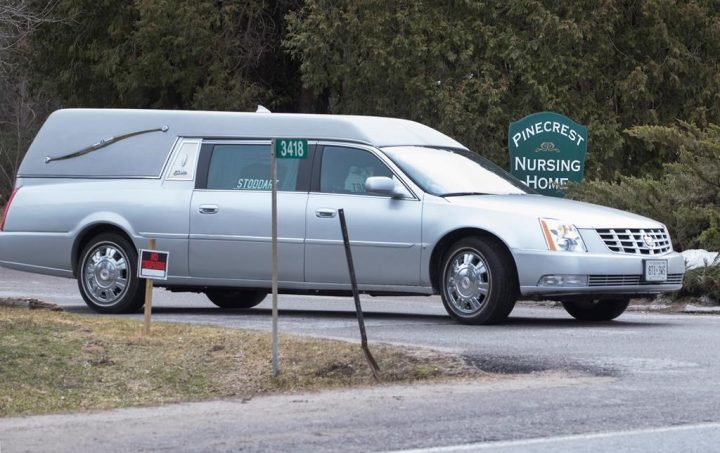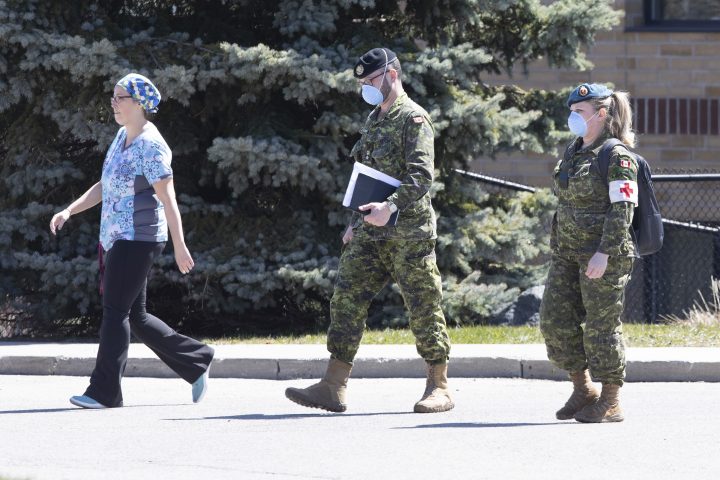Since the start of the coronavirus pandemic around eight months ago, more than 2,200 long-term care residents in Ontario have died from COVID-19.

Long-term care deaths account for nearly two-thirds of all COVID-19-related deaths in the province.
Out of the province’s 626 long-term care facilities, the virus crept into over half of them, causing outbreaks in more than 400.
It’s clear that the homes have been among the hardest-hit areas in Ontario during the pandemic, both in the first and second waves. Similar outcomes have been observed throughout Canada and the world.
‘Our worst nightmare’
On March 18, one day after Premier Doug Ford declared a state of emergency in Ontario, Pinecrest Nursing Home in Bobcaygeon, Ont., declared a respiratory outbreak.
Tests were done on three individuals and results showed they had COVID-19.
What then played out at Pinecrest foreshadowed what was to come in the province’s long-term care system.
“We were so afraid of what was going to happen and I would say our worst nightmare and possibly beyond that came true,” Pinecrest’s Dr. Michelle Snarr said on April 3.
Just over three weeks after the first cases were detected in the facility, over 40 per cent of the residents were dead. On April 9, the 29th COVID-19 death was announced at the 65-bed home.
Prior to the outbreak being declared on March 18, the province announced on March 13 they were stepping up screening for visitors at long-term care homes and enhancing the assessment of infections.
One day later, Ontario’s chief medical officer of health Dr. David Williams advised long-term care homes to ban non-essential visitors.
By March 31, 10 outbreaks were declared in long-term care homes in the province.
“I know our staff is working with the ministry of long-term care to do more education and training for long-term care staff and retirement home staff and working with public health as well,” Ontario’s associate medical officer of health Dr. Barbara Yaffe said at the time.
“I’m hoping with the more aggressive measures that are being put in place and the more aggressive training and support, that hopefully we’ll pick up cases as quickly as possible and that we’ll prevent as much as possible.”

But the situation only got worse.
Data from Public Health Ontario shows the number of confirmed coronavirus cases peaked in long-term care homes in mid-April, with deaths reaching their peak not long after that.

Get weekly health news
Around that time, the provincial government opened the door to systemic change in the long-term care system while announcing new testing and infection prevention measures.
“We have to raise the standards,” Ford said.
“This is a wake-up call to the world, not just Ontario.”
Military is sent in to help
On April 22, the premier announced that Ontario would be requesting assistance from the Canadian Armed Forces for some of the hardest-hit long-term care facilities in the province.
That same day, Ontario announced there would be COVID-19 testing of all residents and workers in long-term care homes. That announcement came after health officials previously resisted calls for such widespread testing of asymptomatic people.
Weeks later, documents obtained by Global News showed that military teams sent to care homes raised serious concerns about the conditions residents endured.
The documents detailed horrific allegations including a blatant disregard for infection prevention and control measures, as well as “borderline abusive, if not abusive” behaviours.
In his press conference that day, Premier Ford called the allegations “appalling” and “disgusting.”
“It is so disturbing that when I read this it was hard to get through,” he said.
“It is the most heart-wrenching report that I have ever read in my entire life.”
The Ontario Long Term Care Association said the pandemic “exacerbated systemic issues, like the longstanding staffing challenges” and called on the government to immediately pour in more resources, including more personal protective equipment and rapid testing.
By June 1, as the first wave of the pandemic slowly began to subside — and under two and a half months since the outbreak began at Pinecrest Nursing Home — 1,465 long-term care residents had died of COVID-19 in Ontario, according to Public Health Ontario.
As the summer months began and restrictions slowly started to be eased, it was an opportunity to begin analyzing what went wrong and what preparations needed to be made ahead of a second wave.
Ontario announced that an independent commission led by a Superior Court Justice would look into what went wrong in the care homes, with a report due by the end of April.
‘Feeling hopeless and helpless’
Throughout the lockdown measures, residents had gone months without seeing family or friends, putting immense strain on the mental health of many.
“I want (people) to know about the loneliness,” said Carolynn Snow, a nursing home resident in Keswick, Ont.
“And … a lot of people feeling hopeless and helpless. We’re at the whim of the health department and the government. We aren’t able to live our lives the way we’d like to. There are times when you wonder, you know, what tomorrow’s going to bring.”
Snow’s nursing home didn’t see any positive coronavirus cases in the first wave. Still, like all homes in Ontario, visitors weren’t allowed for months and regular programming was suspended.
Throughout the summer, the situation in long-term care homes slowly improved. Visitors were once again allowed in under certain conditions, giving residents some much-needed company.
On Aug. 27, the Ministry of Long-Term Care reported there were no active cases among residents.

‘A perfect storm for a disaster’
Dr. Nathan Stall is a geriatrician at Mount Sinai Hospital who has spent much of the year studying how eight out of 10 COVID-19 deaths in Canada’s first coronavirus wave were in long-term care.
“You’re taking the frailest adults, frailest individuals who are in society — they live in congregate settings and the settings they live in are often outdated and crowded with many homes having three- or four-person rooms — and then you’re introducing a highly-transmissible virus that is highly lethal,” Stall said.
“And that’s in the setting of this lopsided response where all of the preparedness and resources have been shunted into acute and critical care. So it was a perfect storm for a disaster.”
Stall said between mid-March until mid-April, much of the focus remained on hospitals.
“It wasn’t until the middle of April that the province said ‘oh my god, let’s start redirecting some of these resources to long-term care homes and let’s try and address what was an out of control humanitarian crisis,'” Stall said.
Stall added that a number of long-standing issues have been at play throughout the crisis, including under-funded staffing.
Hundreds die in 2nd wave
As Ontario entered its second wave of the coronavirus pandemic in the fall, the virus once again made its way into long-term care and more restrictions started to be imposed.
Zero cases in August turned into hundreds just a few months later and hundreds more have died thus far.
As of Monday, there were 528 active cases among residents and 467 among staff.
Whether or not long-term care homes and the provincial government adequately prepared for the second wave is a question that will be considered and analyzed.
Meanwhile, the Ontario Long-Term Care Commission continues its review of the pandemic as it seeks to find solutions to what Premier Ford has called “cracks” in the system.
— With files from Jason Chapman, Greg Davis, Jessica Patton, Mercedes Stephenson, Stewart Bell, Andrew Russell, and The Canadian Press


















Comments